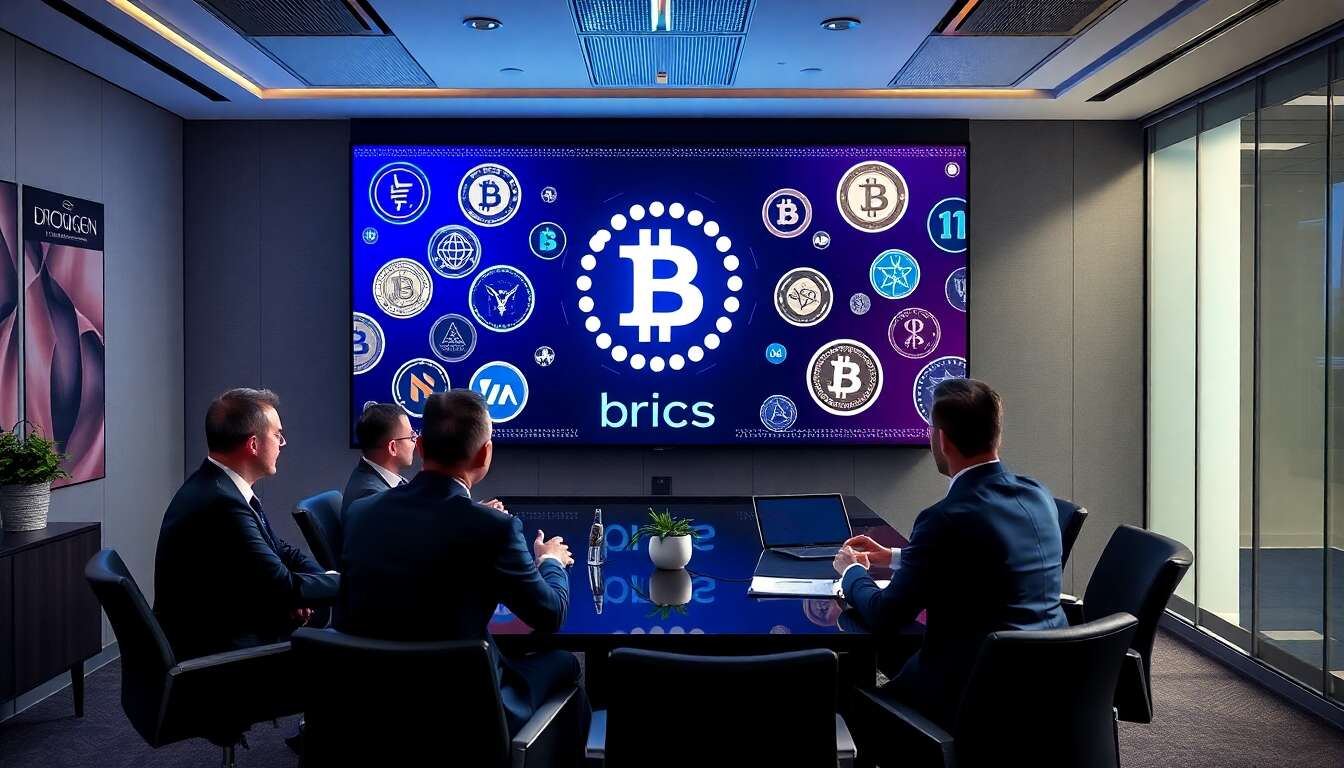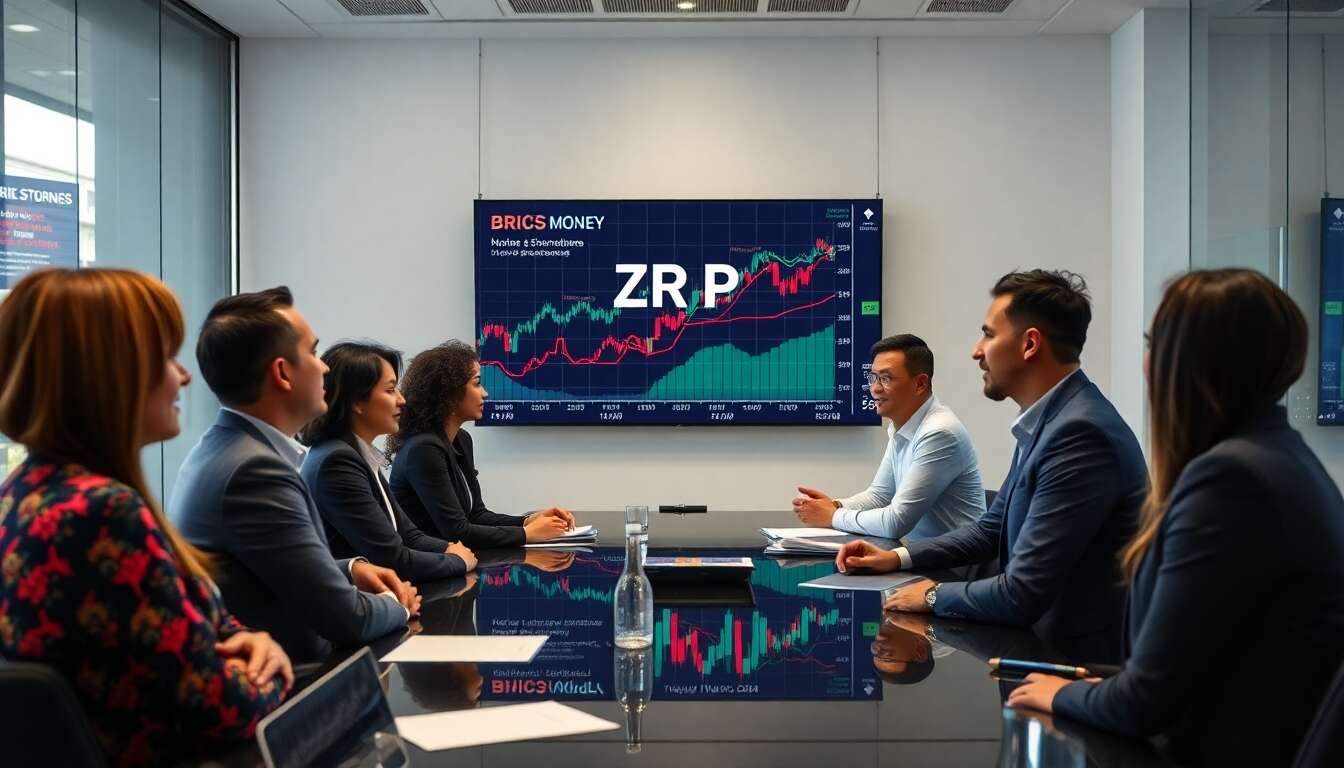The world of international finance is undergoing a seismic shift as nations explore alternatives to traditional currency systems. At the forefront of this evolution are the BRICS nations—Brazil, Russia, India, China, and South Africa. These countries are actively exploring the potential of cryptocurrencies to redefine global trade norms. As a result, BRICS Money, a visionary initiative, has emerged, promising a new era for international transactions. Yet, how does it compare to established cryptocurrencies like bitcoin and xRP ? Delve into the details of these financial innovations and their implications for global commerce.
Brics Money: A new era for international transactions

Reasons behind the BRICS initiative
The primary objective of the BRICS nations is to reduce dependency on the US dollar. This dependency has become increasingly problematic due to economic sanctions that hinder their trade operations. By developing a joint cryptocurrency system, BRICS aims to create an independent financial ecosystem. This system would not only enhance trade efficiency but also provide a buffer against geopolitical influences.
Technological advancements in BRICS Money
BRICS Money is not merely a theoretical concept but a concrete initiative bolstered by technological strides. The BRICS Pay system, introduced in October 2024, marks a tremendous step forward. It leverages blockchain and stablecoins to simplify transactions among member nations. Additionally, the project Drex spearheaded by Brazil, exemplifies the forward-thinking approach. By utilizing distributed ledger technology (DLT), Drex aims to revamp international trade and financial exchanges within the bloc.
The strategic importance of BRICS Money
By employing an in-house cryptocurrency, BRICS can circumvent traditional banking systems such as SWIFT, making it less vulnerable to external restrictions. This strategic move is intended to empower BRICS countries on the international stage while ensuring their economic autonomy. Such a strategy signals a significant shift away from conventional financial dependencies.
As we delve deeper into the architecture of these financial innovations, it’s crucial to understand the foundational role that blockchain technology plays within the BRICS payment ecosystem.
The blockchain at the heart of the BRICS payment system

The role of blockchain technology
Blockchain technology serves as the backbone of the BRICS payment system, offering unmatched security, transparency, and efficiency. Each transaction is recorded on an immutable ledger that is both tamper-proof and easily accessible to all parties involved. This decentralized approach eliminates the need for intermediaries, reducing transaction costs and processing time.
Innovations in distributed ledger technology
Notably, the BRICS network capitalizes on distributed ledger technology (DLT) to facilitate transactions. DLT distributes transactions across multiple nodes, ensuring enhanced security and rapid processing. This empowers BRICS countries to engage in international trade swiftly and securely, free from the constraints of traditional banking systems.
Security and efficiency in BRICS Money
Adopting blockchain solutions significantly bolsters the security framework of BRICS Money. Transactions are cryptographically secured, protecting against fraud and cyber threats. This efficient and secure infrastructure promises to make BRICS Money a viable alternative for international transactions within the member states.
With a solid understanding of the technological underpinnings of BRICS Money, a comparison with established cryptocurrencies like bitcoin and xRP highlights its unique position in the financial world.
Comparison: xRP, bitcoin, and monetary stability

Volatility: A comparative analysis
Cryptocurrencies like bitcoin are renowned for their volatile nature. While this volatility poses opportunities for traders, it can be a significant risk for nations using it for trade. In contrast, xRP and BRICS Money aim to offer more stability, making them appealing for international trade. However, the level of decentralization in bitcoin is unmatched, making it less prone to state or corporate control.
| Cryptocurrency | Volatility | Use Case |
|---|---|---|
| Bitcoin | High | Global exchanges, asset holdings |
| xRP | Moderate | Cross-border payments |
| BRICS Money | Low | International trade within BRICS |
Efficiency in transaction processing
Bitcoin’s network, though highly secure, suffers from scalability issues that result in slower transaction times. On the other hand, xRP is celebrated for its rapid transaction capabilities, which is particularly beneficial for cross-border payments. BRICS Money seeks to combine the best of both worlds, offering both speed and stability for seamless international commerce.
The role of stablecoins and BRICS Money
Within the BRICS framework, stablecoins present a compelling option to counteract market volatility. They offer stability by being pegged to a basket of assets, thus ensuring predictable valuation. This characteristic is particularly valuable for enterprises seeking reliable avenues for conducting international transactions.
Having examined the comparative strengths and weaknesses of these cryptocurrencies, it is crucial to address the challenges and opportunities that enterprises face within the evolving BRICS ecosystem.
Challenges and prospects for enterprises in the BRICS crypto ecosystem
Overcoming regulatory hurdles
Enterprises venturing into the BRICS crypto space must navigate complex regulatory landscapes. Crafting inclusive regulations that promote innovation while ensuring security poses a significant challenge. However, a united effort by BRICS nations to harmonize regulations can improve market access for international businesses.
Prospective growth opportunities
Despite the hurdles, the BRICS crypto ecosystem offers immense growth potential for enterprises. By embracing cryptocurrencies, businesses can tap into new markets, diversify currency exposure, and foster closer economic ties within the BRICS countries. These opportunities catalyze economic growth, benefiting both large corporations and small-to-medium enterprises.
Impact on global economic dynamics
The increasing adoption of cryptocurrencies within the BRICS framework heralds transformative changes in global economic dynamics. As BRICS strengthens its crypto infrastructure, this alliance likely will influence international trade policies, reshape traditional financial systems, and promote a more balanced economic landscape.
The journey toward a sustainable and autonomous crypto ecosystem continues to gather momentum, promising a redefined approach to international trade and collaboration within the BRICS nations.
The BRICS countries embark on an innovative journey, seeking to harness the power of cryptocurrencies to reinvent their financial interactions. Through initiatives like BRICS Money and the strategic incorporation of blockchain technology, these nations are positioning themselves as pioneers in economic autonomy. By exploring synergies with established cryptocurrencies and confronting challenges with resilience, the BRICS alliance forges a promising path toward sustainable economic growth and international cohesion.



